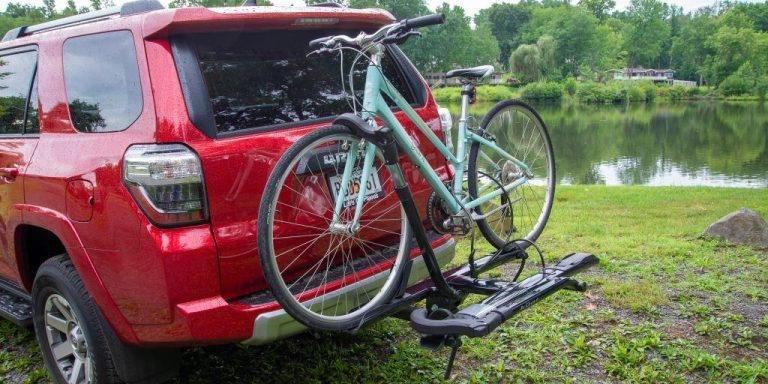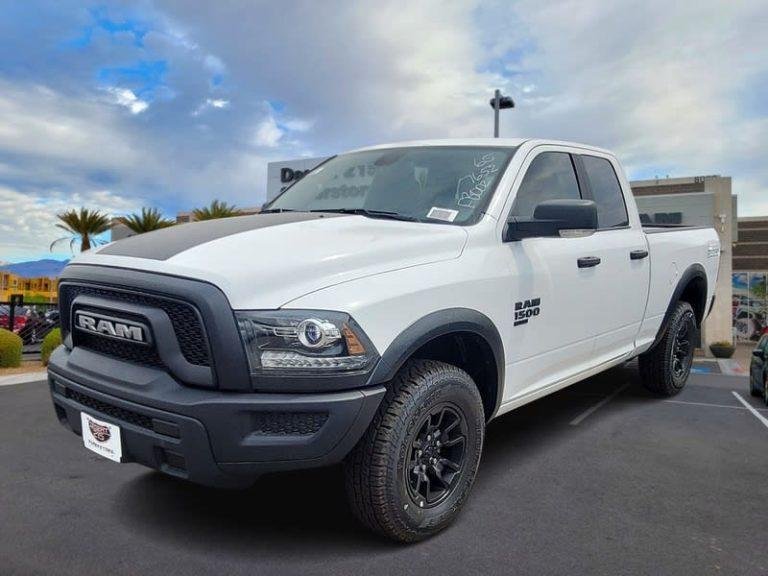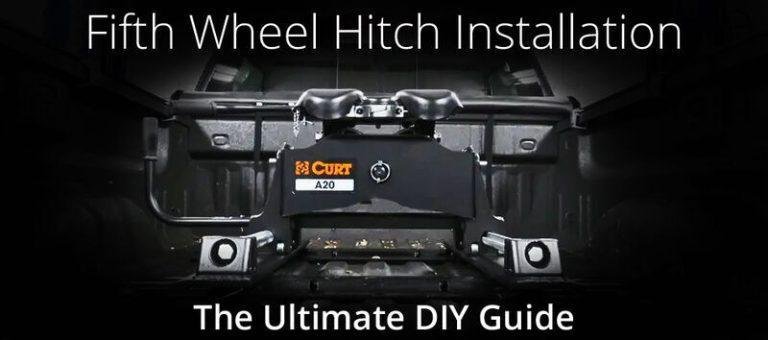The most common ball hitch size is 2 inches. Ball hitch sizes refer to the diameter of the trailer hitch ball that connects the trailer to the towing vehicle.
The 2-inch ball hitch size is popular because it is used for a wide range of towing applications, including small and medium-sized trailers. It offers a good balance of strength and versatility, making it suitable for various towing needs. Whether you have a utility trailer, camper, or boat trailer, chances are that it will require a 2-inch ball hitch size.
This standardization allows for greater compatibility between different towing setups, making it easier for individuals to find compatible hitch components.

Credit: nctrailers.com
What Is A Ball Hitch Size?
A ball hitch size refers to the diameter of the trailer hitch ball. The most common ball hitch size is 2 inches, which can accommodate a wide range of trailers, making it a popular choice among towing applications.
Definition And Importance Of Ball Hitch Size
A ball hitch size refers to the diameter of the ball that connects a towing vehicle to a trailer. It is a crucial factor in determining the towing capability and safety of a towing setup. The right ball hitch size ensures a secure connection between the towing vehicle and the trailer, allowing for smooth towing without any accidents or damages.
Here is a breakdown of the definition and importance of ball hitch size:
- Ball hitch size determines the compatibility between the towing vehicle and the trailer. Different trailers require different ball hitch sizes, typically ranging from 1-7/8 inches to 2-5/16 inches.
- The ball hitch size directly affects the towing capacity of the setup. Using an incorrect or mismatched ball hitch size can lead to instability during towing, compromising the safety of the driver, passengers, and other road users.
- Choosing the correct ball hitch size is essential for evenly distributing the weight of the trailer across the towing vehicle’s frame and axles. This helps maintain stability, control, and proper braking while towing.
- The ball hitch size can impact the towing performance and maneuverability of the setup. Using a smaller ball hitch may restrict the angle and range of motion of the trailer, making it challenging to navigate tight corners or reverse.
- It is crucial to consult the manufacturer’s guidelines or refer to the towing vehicle’s owner’s manual to determine the appropriate ball hitch size for a specific trailer. This ensures compliance with safety standards and maximizes the towing capability.
Remember, selecting the correct ball hitch size is not something to be taken lightly. It is a vital aspect of safe and successful towing, and getting it wrong can result in significant consequences.
Understanding The Most Common Ball Hitch Sizes
The most common ball hitch size is 2 inches, which is widely used for towing small to medium-sized trailers. It is important to understand the hitch size to ensure compatibility and safe towing.
In the world of towing, having the right ball hitch size is essential for a secure connection between your vehicle and trailer. Different trailer types and weights require specific ball hitch sizes to ensure a safe towing experience. In this section, we will provide an overview of the different ball hitch sizes, discuss the factors that determine the most common ball hitch size, and explore the advantages of using the most common ball hitch size.
Overview Of The Different Ball Hitch Sizes
When it comes to ball hitch sizes, there are several options available, but three sizes are commonly used: 1-7/8 inches, 2 inches, and 2-5/16 inches. Each size corresponds to a specific weight capacity, allowing you to match the hitch with the weight of your trailer.
Here’s an overview of these different ball hitch sizes:
- 1-7/8 inches: This hitch size is commonly used for trailers with a weight capacity of up to 2,000 pounds. It is suitable for small utility trailers, small pop-up campers, and lightweight cargo trailers.
- 2 inches: The 2-inch ball hitch size is the most popular choice for trailers with weight capacities ranging from 2,001 to 6,000 pounds. It is commonly used for medium-sized utility trailers, boat trailers, and larger pop-up campers.
- 2-5/16 inches: This ball hitch size is reserved for heavy-duty trailers with weight capacities exceeding 6,000 pounds. It is commonly used for large travel trailers, fifth wheel trailers, and livestock trailers.
Factors That Determine The Most Common Ball Hitch Size
Choosing the most common ball hitch size depends on several factors, including the type of trailer you own, its weight, and the towing capacity of your vehicle. Here are the key factors that help determine the most common ball hitch size:
- Trailer weight: The weight of your trailer plays a crucial role in selecting the appropriate ball hitch size. Heavier trailers require larger ball hitch sizes to handle the additional weight and provide a secure towing connection.
- Towing vehicle capacity: Your vehicle’s towing capacity is another important consideration. It determines the maximum weight your vehicle can safely tow. The most common ball hitch size is often determined by the towing capacity of the vehicle.
- Trailer type: Different trailer types have varying weight capacities, which directly correlate to the appropriate ball hitch size. Considering the type of trailer will help you determine the most common ball hitch size for your specific needs.
Discussion On The Advantages Of Using The Most Common Ball Hitch Size
Choosing the most common ball hitch size offers several advantages, including:
- Ease of replacement: Since the most common ball hitch sizes are widely available, finding a replacement or spare part is much easier, whether you’re at a hardware store or seeking assistance on the road.
- Compatibility with different trailers: Opting for the most common ball hitch size ensures compatibility with a wide range of trailers, granting you the flexibility to tow different types of trailers without needing to switch hitches.
- Peace of mind: Using the most common ball hitch size is often recommended due to its proven track record and widespread use. This provides reassurance that the hitch is reliable, safe, and suitable for towing applications.
Understanding the different ball hitch sizes, the factors that determine the most common size, and the advantages of using the most common size is crucial for a seamless towing experience. Whether you’re towing a small utility trailer or a heavy-duty fifth wheel, selecting the appropriate ball hitch size ensures a secure connection and peace of mind on the road.
Determining The Most Common Ball Hitch Size For Your Vehicle
Determining the most common ball hitch size for your vehicle can be crucial for safe towing. It is important to identify the appropriate size by considering factors such as the towing weight capacity and the manufacturer’s recommendations.
Are you in the market for a new ball hitch or looking to replace your current one? Determining the right ball hitch size for your vehicle is crucial for safe and secure towing. With various vehicle types and towing capacities, it’s important to find the most common ball hitch size that matches your specific needs.
In this section, we’ll explore some factors to consider when determining the ball hitch size for your vehicle, how to measure your current ball hitch size, and highlight the most common ball hitch sizes for different vehicle types.
Factors To Consider When Determining The Ball Hitch Size For Your Vehicle:
When it comes to choosing the right ball hitch size for your vehicle, there are a few important factors to consider. Here are some key points to keep in mind:
- Towing capacity: The towing capacity of your vehicle is one of the primary factors in determining the appropriate ball hitch size. Make sure to check your vehicle’s manual or consult a professional to find the maximum towing capacity.
- Gross trailer weight (gtw): The gtw refers to the total weight of the trailer and its contents. It’s crucial to know the gtw to ensure that you select a ball hitch with the appropriate weight rating.
- Ball hitch diameter: Ball hitches come in various diameters, commonly ranging from 1 7/8 inches to 2 5/16 inches. Knowing the correct diameter is essential for a secure towing connection.
- Hitch receiver size: Your vehicle’s hitch receiver opening will determine the shank size needed for the ball mount. Common hitch receiver sizes include 1 1/4 inches, 2 inches, and 2 1/2 inches.
- Trailer coupler size: The coupler size on your trailer will determine the size of the ball required for towing. It’s essential to match the ball hitch size with the trailer coupler size to ensure a secure connection.
How To Measure Your Current Ball Hitch Size:
If you already have a ball hitch and are unsure of its size, follow these steps to measure it accurately:
- Measure the shank diameter: Use a caliper or a ruler to measure the diameter of the shank, which is the part of the ball hitch that inserts into the hitch receiver. Common sizes include 3/4 inch, 1 inch, or 1 1/4 inches.
- Measure the ball diameter: Measure the diameter of the ball, which is the rounded portion that connects to the trailer coupler. The most common sizes are 1 7/8 inches, 2 inches, or 2 5/16 inches.
- Verify the weight rating: Check the weight rating on the ball hitch to ensure it matches the towing capacity of your vehicle and the gtw of your trailer.
By following these steps, you can accurately measure your current ball hitch size and determine if it meets your towing needs.
Highlighting The Most Common Ball Hitch Size For Different Vehicle Types:
In general, the most common ball hitch sizes for different vehicle types are as follows:
- Small cars and sedans: 1 7/8-inch ball hitch is commonly used for smaller trailers and light loads.
- Suvs and mid-sized trucks: 2-inch ball hitch is the standard size for towing medium-sized trailers and loads.
- Full-sized trucks and suvs: 2 5/16-inch ball hitch is typically used for heavy-duty towing, such as large trailers and rvs.
It’s important to note that these are general guidelines, and you should always consult your vehicle’s manual or seek professional advice to determine the most appropriate ball hitch size for your specific towing needs.
Remember, selecting the correct ball hitch size is crucial to ensure safe and reliable towing. By considering factors such as towing capacity, gtw, ball hitch diameter, hitch receiver size, and trailer coupler size, you can confidently choose the most common ball hitch size that best suits your vehicle and towing requirements.
How To Choose The Right Ball Hitch Size For Your Needs
When choosing a ball hitch size, it’s important to consider the most common option. The most common ball hitch size is 2 inches, which is suitable for a wide range of towing needs. Be sure to check your vehicle’s towing capacity and consult the owner’s manual for specific recommendations.
Factors To Consider When Choosing The Right Ball Hitch Size For Your Specific Towing Needs
When it comes to towing, choosing the right ball hitch size is crucial for a safe and efficient hauling experience. There are several factors you should consider before deciding on the appropriate size for your towing needs. These factors include weight capacity, trailer compatibility, and specific towing requirements.
Here are the key considerations to keep in mind:
- Weight capacity: Before selecting a ball hitch, it is important to determine the weight of the trailer you will be towing. Each ball hitch has a specific maximum weight capacity that it can safely handle. Exceeding this weight limit can lead to instability and compromised safety on the road. Make sure to match your trailer’s weight with the appropriate ball hitch size to ensure optimal performance.
- Trailer compatibility: Different trailers require different ball hitch sizes. It is essential to choose a ball hitch that is compatible with your specific trailer’s coupler size. Common ball hitch sizes include 1-7/8 inches, 2 inches, and 2-5/16 inches, with the latter being the most commonly used for heavy-duty towing. Ensuring the compatibility between your trailer’s coupler and the ball hitch size is crucial for a secure and reliable connection.
- Specific towing requirements: Consider your specific towing requirements, such as the type of load you will be hauling and the terrain you will be traversing. Heavier loads or off-road towing may require a larger ball hitch size to provide the necessary stability and control. On the other hand, lighter loads or highway towing may warrant a smaller ball hitch size. Assessing your unique towing needs will help you make an informed decision.
Selecting the appropriate ball hitch size is a critical step in ensuring safe and efficient towing. Factors such as weight capacity, trailer compatibility, and specific towing requirements should be carefully considered. By understanding these factors and matching them to the right ball hitch size, you can enjoy a smooth and secure towing experience.
Common Misconceptions About Ball Hitch Sizes
One common misconception about ball hitch sizes is that the most common size is 2 inches. However, it is important to note that ball hitch sizes can vary depending on the towing capacity and weight of the trailer being towed.
So, it’s crucial to consider the specific requirements of your trailer before determining the right ball hitch size.
Debunking Common Misconceptions Surrounding Ball Hitch Sizes
If you’re in the market for a ball hitch for your trailer, you’ve probably come across various misconceptions surrounding ball hitch sizes. It’s important to separate fact from fiction in order to make an informed decision. In this section, we’ll address common concerns and doubts about the most common ball hitch size, debunking popular misconceptions to ensure you have all the information you need.
Misconception: One Size Fits All
- Not all trailers have the same requirements; hence, one ball hitch size cannot fit every trailer.
Misconception: Bigger Is Always Better
- Choosing the largest ball hitch size available may seem like a safe option, but it’s not always necessary or practical.
Misconception: All Trailer Couplers Are Compatible
- Different trailers come with different coupler sizes, and not all couplers work with every ball hitch size.
Misconception: Height Doesn’T Matter
- The height of the ball hitch can play a crucial role in ensuring safe and level towing. Ignoring it can lead to imbalanced weight distribution and poor handling.
Misconception: Tongue Weight Has No Impact
- Tongue weight, the downward force applied by the trailer on the hitch, is directly related to the ball hitch size. Ignoring this factor can lead to unstable towing conditions.
Understanding and addressing these misconceptions will help clear up any doubts or concerns you may have about the most common ball hitch size. By selecting the right size for your trailer and considering other important factors such as coupler compatibility, height, and tongue weight, you can ensure a safe and smooth towing experience.
Frequently Asked Questions On What Is The Most Common Ball Hitch Size?
What Size Hitch Ball Do Most Travel Trailers Use?
Most travel trailers use a 2-inch diameter hitch ball. It is important to match the size of the hitch ball to the size of the trailer coupler for safe towing. The 2-inch hitch ball is commonly used due to its compatibility with a wide range of trailers.
It provides a secure connection between the trailer and the towing vehicle. Before purchasing a hitch ball, it is vital to check the trailer’s coupler size and ensure that it matches with the hitch ball diameter. Using the correct size hitch ball is crucial for the overall towing experience and ensures a safe and hassle-free journey.
What Are Standard Hitch Sizes?
Standard hitch sizes refer to the different receiver sizes used for towing various trailers. The most common hitch sizes are 1. 25 inches and 2 inches. These measurements represent the inside dimensions of the receiver, where a ball mount or hitch accessory is inserted.
A 1. 25-inch hitch is typically used for smaller trailers, such as bike racks or lightweight utility trailers. It can handle a tongue weight of up to 300 pounds and a towing capacity of up to 3,500 pounds. On the other hand, a 2-inch hitch is more versatile and can accommodate a wider range of trailers, including larger utility trailers, campers, and boats.
It can handle a tongue weight of up to 600 pounds and a towing capacity of up to 6,000 pounds or more. When selecting a hitch, it’s crucial to match the receiver size to the trailer’s requirement. A mismatched hitch can compromise safety and towing performance.
Can You Use 1 7 8 Ball On 2 Inch Hitch?
Yes, you can use a 1-7/8″ ball on a 2-inch hitch.
What Is The Standard Hitch Shank Size?
The standard hitch shank size is typically 2 inches by 2 inches.
Conclusion
To conclude, selecting the right ball hitch size is crucial for safe and efficient towing. The most common ball hitch sizes are 2 inches and 2-5/16 inches. When choosing between these two sizes, it is important to consider the towing capacity, the type of trailer being utilized, and any specific requirements from the vehicle or trailer manufacturer.
By selecting the appropriate ball hitch size, you can ensure a secure connection between your towing vehicle and trailer. This not only promotes safety on the road but also enhances the overall towing experience. Remember to always double-check the compatibility of the ball hitch size before setting off on your towing adventure.
With the right ball hitch size in place, you can enjoy a smooth and hassle-free towing experience, knowing that your trailer is securely attached.




